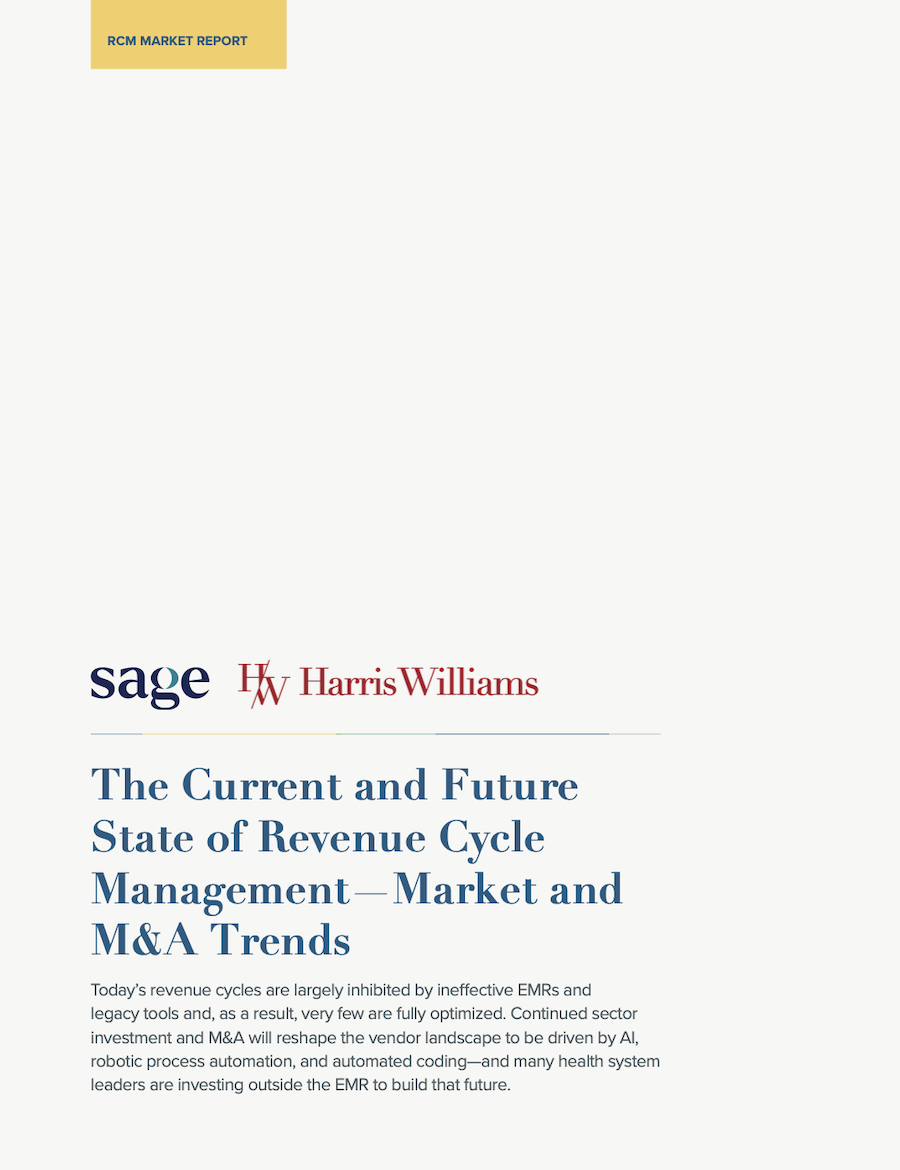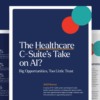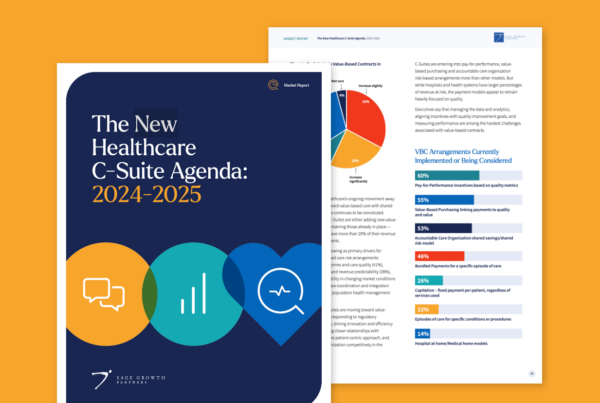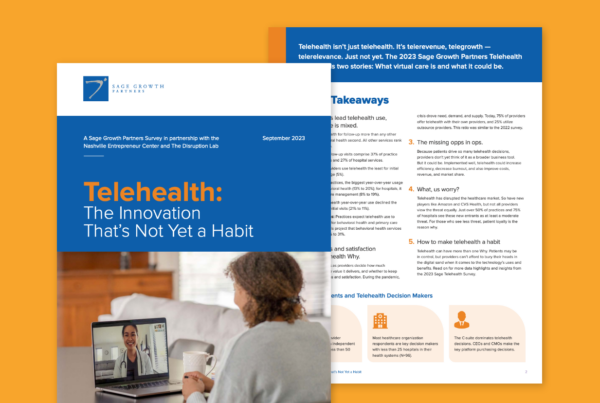The Current and Future State of Revenue Cycle Management—Market and M&A Trends
To better understand the state of revenue cycle management (RCM) and where health system leaders are prioritizing investments, Sage Growth Partners independently surveyed 115 C-Suite executives, CFOs, revenue cycle executives, CIOs, and other finance, IT, and operations professionals. We also partnered with Harris Williams to incorporate the global investment bank’s perspective on merger and acquisition trends (M&A) into this report.
The research results show that today’s revenue cycles are largely inhibited by ineffective EMRs and legacy tools and, as a result, very few are fully optimized. Continued sector investment and M&A, however, will reshape the vendor landscape to be driven by AI, robotic process automation, and automated coding—and many health system leaders are investing outside the EMR to build that future.
Key Findings:
More than half (53%) of health system and hospital leaders say financial stability is their top priority, and 59% rank RCM among their organization’s top 3 priorities.
Despite the priority, only 3% assess the current state of their revenue cycle as “market leading.”
43% say their revenue cycle has improved since 2019, while 21% say it has gotten “slightly worse” or “significantly worse” in that timeframe.
Among those who say their revenue cycle has improved, 78% cite operational process improvements, 69% say technology advancements, and 52% say workforce/staffing investments created the improvements—signaling that investing to address the factors making revenue cycles worse is successful at driving impactful changes.
Approximately half of survey respondents say AI/automation would have a “high positive impact” or “very positive impact” on the following parts of the revenue cycle: back-end (53%), middle (47%), and front-end (44%).
Download the Market Report
Sources
Lorem ipsum dolor sit amet, consectetuer adipiscing elit, sed diam nonummy nibh euismod tincidunt ut laoreet dolore magna aliquam erat volutpat. Ut wisi enim ad minim veniam, quis nostrud exerci tation ullamcorper suscipit lobortis nisl ut aliquip ex ea commodo
Ut wisi enim ad minim veniam, quis nostrud exerci tation ullamcorper suscipit lobortis nisl ut aliquip ex ea commodo
Lorem ipsum dolor sit amet, consectetuer adipiscing elit, sed diam nonummy nibh euismod tincidunt ut laoreet dolore magna aliquam erat volutpat. Ut wisi enim ad minim veniam, quis nostrud exerci tation ullamcorper suscipit lobortis nisl ut aliquip ex ea commodo
Ut wisi enim ad minim veniam, quis nostrud exerci tation ullamcorper suscipit lobortis nisl ut aliquip ex ea commodo
Lorem ipsum dolor sit amet, consectetuer adipiscing elit, sed diam nonummy nibh euismod tincidunt ut laoreet dolore magna







